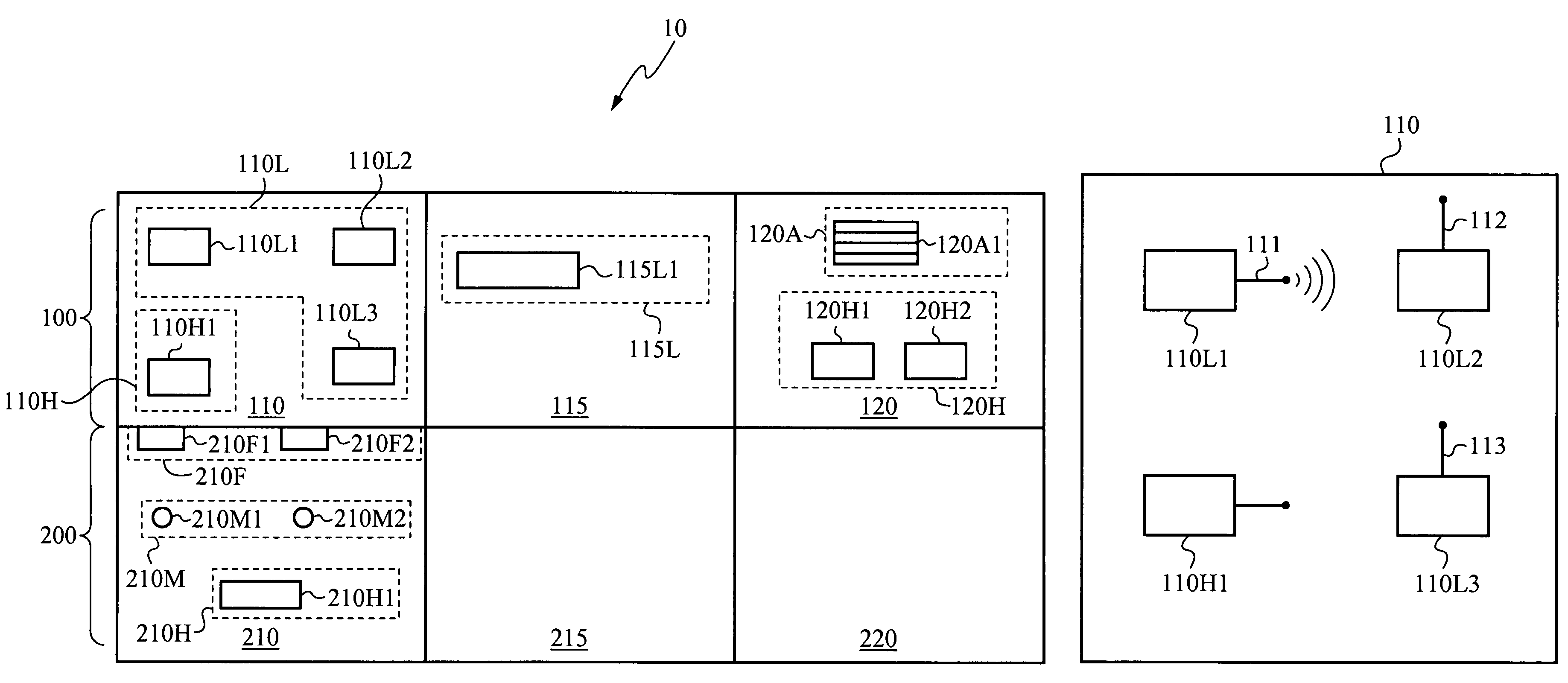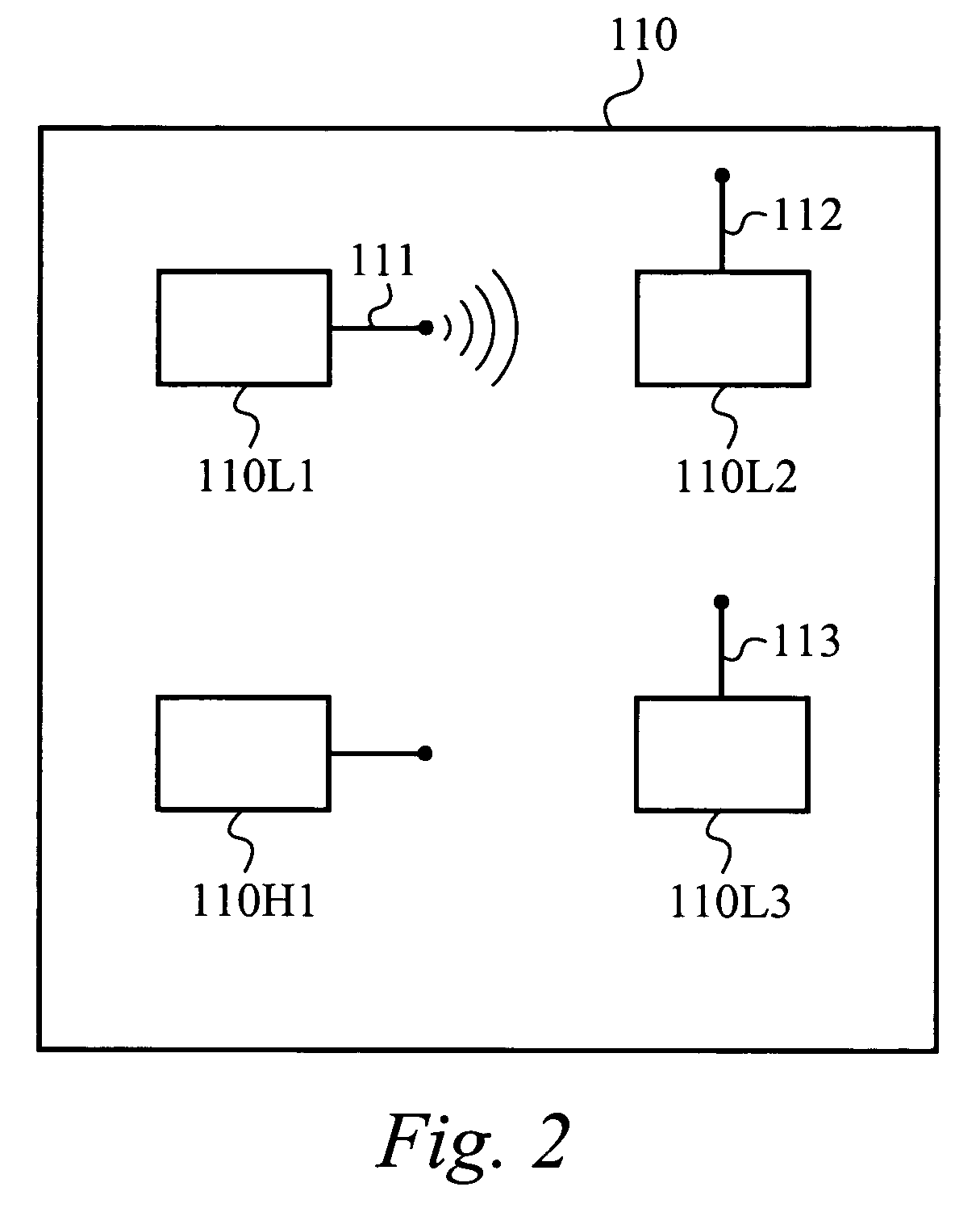Location-based addressing lighting and environmental control system, device and method
a technology of lighting and environmental control and location-based address, which is applied in the direction of programmatic control, audible advertising, instruments, etc., can solve the problems of system difficulty in maintenance, system scale not good, time-consuming process, etc., and achieve the effect of reducing traffic and efficient control of devices
- Summary
- Abstract
- Description
- Claims
- Application Information
AI Technical Summary
Benefits of technology
Problems solved by technology
Method used
Image
Examples
Embodiment Construction
To facilitate the clarity of the ensuing description, words listed below have been ascribed the following meanings:
[0038]1) LOCATION—A position in a spatial environment, as commonly defined by the planner or user of that environment. Generally, a location is specified, for completeness, in a hierarchical manner that serves to uniquely define the position, for example, as the “main conference room on the third floor of the main building”. For most applications, a location corresponds to a place on, or section of, a building floor plan. For each location, there are often others that, by relation, are less or more specific than it, corresponding to higher or lower levels in the hierarchy; in the foregoing example, a less-specific location is the entire “third floor of the main building”, while a more specific example might be the “speaker's podium of the main conference room on the third floor of the main building”.
2) LOCATION DESCRIPTOR (“LD”)—An n-tuple that encodes a location, gener...
PUM
 Login to View More
Login to View More Abstract
Description
Claims
Application Information
 Login to View More
Login to View More - R&D
- Intellectual Property
- Life Sciences
- Materials
- Tech Scout
- Unparalleled Data Quality
- Higher Quality Content
- 60% Fewer Hallucinations
Browse by: Latest US Patents, China's latest patents, Technical Efficacy Thesaurus, Application Domain, Technology Topic, Popular Technical Reports.
© 2025 PatSnap. All rights reserved.Legal|Privacy policy|Modern Slavery Act Transparency Statement|Sitemap|About US| Contact US: help@patsnap.com



